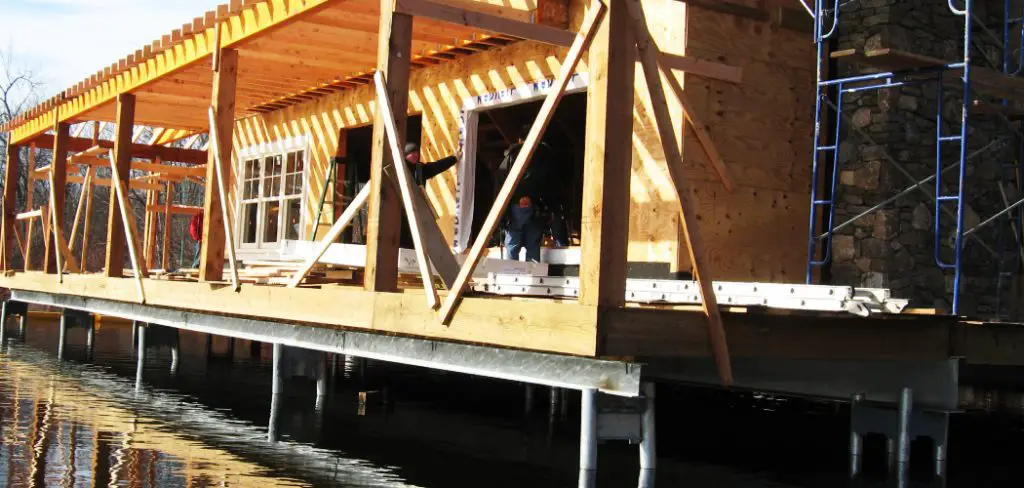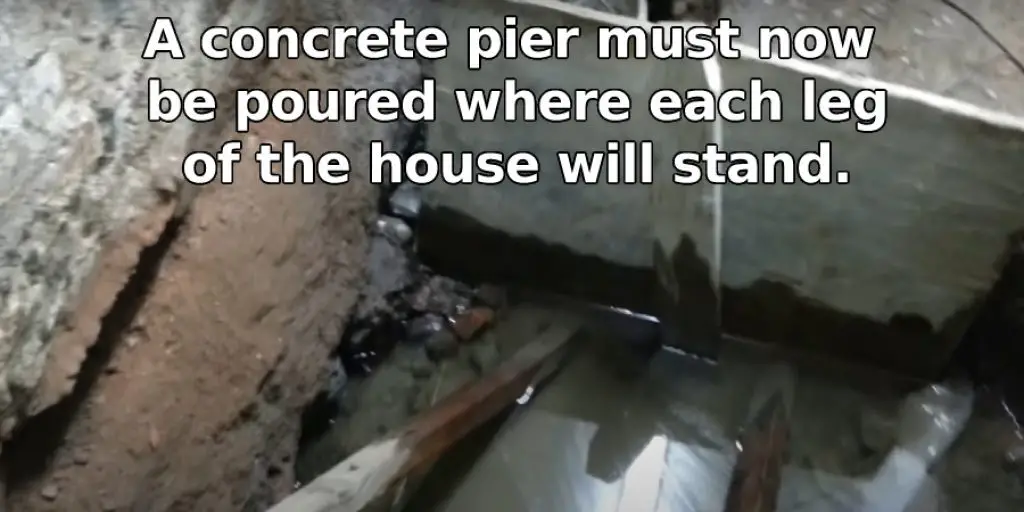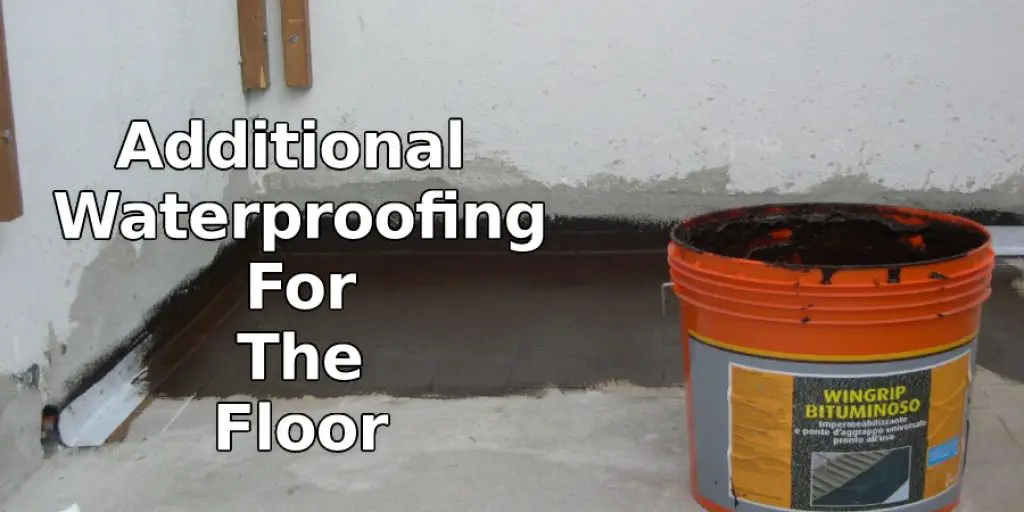How to Build a Foundation on a High Water Table
If you’ve ever built a house, you know that laying the foundation is one of the most critical steps. The ground needs to be solid and level for your home to stand firm against storms and winds. But what happens when there’s too much water? High water tables can create many problems for homeowners who are trying to build their dream homes.

This blog post will help you understand how high water tables affect the construction and give you some ideas on how to deal with this problem so you can still have the perfect place to call home. In this blog post, we’ll take a close look at what causes high water tables as well as why it’s such an issue. Then, in this article, we’ll explore how to build a foundation on a high water table.
Step to Follow on How to Build a Foundation on a High Water Table
Step One: Excavate the Site
Excavating the site is an essential part of building a foundation. First, it requires experience and knowledge to dig out all the soil carefully. Next, the house’s land must be dug down to a level below the high water table. This can be anywhere from two and a half to three feet. Building a foundation is impossible if the high water table is too close to the surface, and other options must be considered.
Step Two: Place Pipe Under Grounds
The contractor will now place PVC pipe around the perimeter of where the house is going to be built. They then pour a mixture of gravel and bentonite clay around it. The bentonite clay is used to hold the water in place and the gravel provides a solid base for the foundation to be built on top of.
Step Three: Pour Concrete Piers

A concrete pier must now be poured where each leg of the house will stand. The piers are spaced five feet apart and anchored securely below the gravel. This ensures an even distribution of weight for the house not to crack when the building begins. The concrete mix will need to cure for several days before the house can be moved onto them.
Step Four: Pour the First Floor
The first floor must be poured at this time. It will need to cure for twenty-four hours before it can support a load, and then the rest of the house and roofing materials can be brought in. This process also requires work permits from local governments, depending on where you are building your home.
Step Five: Complete the House
The rest of the house can then be completed usually. Next, you will need to consider where you place the sewer and water lines, but other than that, it is up to your preferences on how you build around them.
Existing power lines and telephone lines must also be taken into consideration and possibly moved if they pose a hazard or disruption to the building of your home. Again, this will help in how to build a foundation on a high water table.
Step Six: Additional Waterproofing for the Floor
When the first floor is completed but not yet occupied, more concrete can be poured to create a completely waterproof barrier between the house and the ground below. This will need to cure for twenty-four hours before it can support weight as well. Next, a trench needs to be dug around the house’s perimeter and lined with a sump pump.

The water will be pumped into a dry well, a deep hole in the ground surrounded by crushed stone where it can percolate at whatever speed nature dictates. This will also need to cure for twenty-four hours before it can support the weight. The storm sewer system that drains your yard into the main public drain can be used as a dry well or connected to your sump pump by digging out the crushed stone and creating new trenches.
Step Seven: Move-in!
At this point, you are free to move into your house. Then, you can begin landscaping, planting lawns, or any other vegetation you wish around the foundation of your home. However, there is one more step to take, which should be done annually if your basement floods during heavy rains.
You need to run a garden hose from the basement window well up the side of the foundation and turn it on full blast. This will pressurize your basement and push any water coming in back down where it belongs.
You Can Check It Out to Remove Duckweed From Aquarium
Step Eight: Prevent the Basement from Flooding
The last step is to install a sump pump in your basement window well on the opposite side of where you ran the hose. If possible, this should be connected to the same storm sewer system as mentioned earlier, so it will not need to work very hard. This can be wired up to an alarm that warns of high water levels so you will know when to turn on the hose.
The sump pump should run for no more than five or ten minutes at a time because it is pumping several gallons of water per minute out of your home. If you have heavy rains that last over an hour, you probably need to buy a larger model with a bigger motor to handle the workload. In any case, you will never have to worry about water damage again with this system in place!
Step Nine: Prevent the House from Floating
However, there is one problem with this method that you must be aware of. If you live in an area where frequent and heavy flooding, the water table may rise to such a level that your basement will become flooded regardless. This could present a danger if you do not shut off the sump pump before it floods the basement.
To handle this situation, you need to dig a trench that runs outside your foundation about eight or ten feet away from it. Then, connect this trench to the drain tile system with plastic piping and ensure it does not leak because it will be under tremendous pressure. If you want to find out more about how to build a foundation on a high water table, keep reading.
What Do I Do If My Water Table Is High?
Perhaps you are someone who is in the process of building a new home, and you have heard about high-water table conditions. Or maybe you bought an existing house that sits on top of a water table high or otherwise and now would like to know what to do about it.
If either of these scenarios sounds like they might relate to you, you are in luck! This article will discuss what high water tables are, why they pose problems to your building project, and some steps that you can take to ensure your home is not impacted by this condition.
Frequently Asked Question
What Do I Do if My Water Table Is High?
If your water table is high, it can lead to the following issues:
- It may affect the amount of oxygen in the soil and water, which will cause plants to wilt and die.
- It can lead to flooding due to increased run-off.
- The excess plant material may not be able to decompose and break down because of a lack of oxygen or nutrients in the soil, which leads to large amounts of dead plant material that creates anaerobic conditions that contribute significantly to greenhouse gas emissions from decaying plant matter.
What Happens if Water Table Above the Base of Footing?
If the water table is above the base of the footing, then it is likely that there will be some settlement or bulging. This could lead to leakage from a pipe, cracks in foundations, and even seepage from walls.
Does Water Table Affect Foundations?
Yes, a water table can affect foundations if they are not waterproofed properly. The reason why this happens is that when a foundation has been placed on top of an unstable surface such as sand or mud, it may settle unevenly over time and tilt the building from its original level. If this happens, you will see cracks in the walls and leaks in pipes that connect the foundation to different areas of your home.
Therefore, if you want to avoid these problems, then it is best to consult with a professional before placing your foundation down on any ground that could be unstable.
What Time of Year Is Water Table Highest?
There are two ways to answer this question. One is to take a look at the calendar and figure out what time of year water table is highest. The other way is to find out which month has the most rainfall.
To do this, you will need to use some resource that tells you about rainfall in different parts of the world or get it from your local weather station.
Conclusion
Building on a high water table can be done, but it will require some extra effort. The first step is to have your foundation inspected by an engineer for any potential problems. For example, if the soil has too much moisture content or high groundwater levels in the area, you may need to hire someone with experience building foundations on higher-than-normal water tables.
A competent engineer should also measure how deep down your footings go and suggest what type of piling system would work best given these measurements. After that, all you’ll need is patience, as this process could take up to three times longer than usual! We hope you enjoyed this article on how to build a foundation on a high water table.
You may also read this – How to Remove Standing Water on Flat Roof








